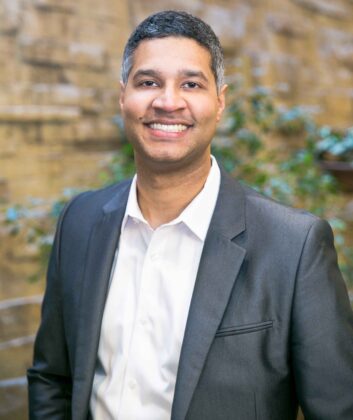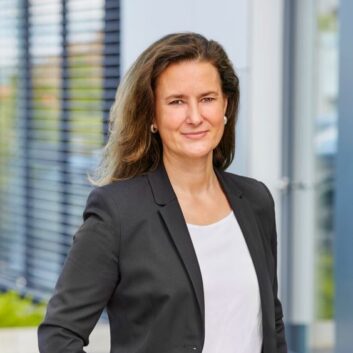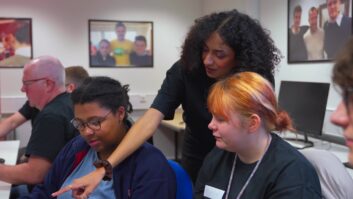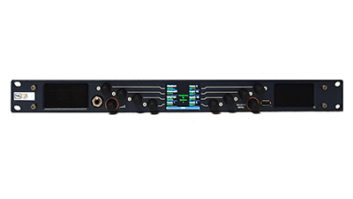Joining us for our professional development ‘drivers of change’ feature are Phillip Farinha, director of people & culture, Accedo; Hanna Fjällström, HR manager, Codemill; Matthew Quade, CEO, TSL; and Deniz Uetkue, director human resources, Guntermann & Drunck.
Tell us about any professional development initiatives your organisation has in place for new and existing staff, inclusive of re/up-skilling and mentorship programmes.
 Phillip Farinha (PF): At Accedo we have a number of professional development initiatives in place for both new and existing staff. This includes:
Phillip Farinha (PF): At Accedo we have a number of professional development initiatives in place for both new and existing staff. This includes:
- Onboarding and Orientation Programmes: Comprehensive orientation sessions for new employees.
- Skills Training and Workshops: Various workshops covering technical and soft skills.
- Internal Training Programmes: Knowledge sharing through internal training initiatives.
- Mentorship Programmes: Formal mentorship program for guidance and support.
- Continuous Learning Platforms: Access to online learning resources and courses.
- Certifications and External Training: Support for obtaining certifications and attending external training.
- Performance Development Plans: Goal-oriented plans for professional growth.
- Tuition Reimbursement: Programmes that reimburse education expenses.
 Hanna Fjällström (HF): At Codemill we consider professional development to be an ongoing process that needs continuous attention throughout the year. All employees have the possibility of using 40 hours per year for personal development during work time. The team regularly shares knowledge and supports each other’s development, and Codemill held an employee conference recently with inspirational presentations from the team. Initiatives like this grow the team’s understanding by sharing information across multiple departments.
Hanna Fjällström (HF): At Codemill we consider professional development to be an ongoing process that needs continuous attention throughout the year. All employees have the possibility of using 40 hours per year for personal development during work time. The team regularly shares knowledge and supports each other’s development, and Codemill held an employee conference recently with inspirational presentations from the team. Initiatives like this grow the team’s understanding by sharing information across multiple departments.
 Deniz Uetkue (DU): At G&D, it is important to us to give new and existing employees the opportunity to continuously develop and expand their skills. For new employees, we offer comprehensive training during the onboarding phase. This training provides them with the necessary knowledge and skills to effectively manage their roles. We place great importance on our new team members developing a solid understanding of our products, processes, and corporate culture.
Deniz Uetkue (DU): At G&D, it is important to us to give new and existing employees the opportunity to continuously develop and expand their skills. For new employees, we offer comprehensive training during the onboarding phase. This training provides them with the necessary knowledge and skills to effectively manage their roles. We place great importance on our new team members developing a solid understanding of our products, processes, and corporate culture.
Another important element of our training initiatives is the mentoring programme. Every new employee at G&D is assigned a mentor to guide them through the onboarding process and act as a resource for questions and support. The mentors share their experience and expertise to facilitate a successful start for the new employees. In addition, we offer regular training for our existing employees. These trainings are offered especially when new products or work equipment are introduced. We believe that continuous learning and training are essential for the competitiveness of our company.
All in all, these professional development initiatives are an essential part of our HR development strategy at G&D. We are dedicated to creating a supportive environment in which our employees can continuously grow and reach their full potential. Through training, introductions to new products and work tools, and mentoring, we strive to strengthen the competencies and skills of our employees and promote their professional development.
 Matthew Quade (MQ): TSL has always supported the professional development of staff and has a proud history of bringing new graduates into the team and training them up to go on to fantastic careers in the industry.
Matthew Quade (MQ): TSL has always supported the professional development of staff and has a proud history of bringing new graduates into the team and training them up to go on to fantastic careers in the industry.
We have a review programme which focuses on core competencies and resources for every individual member of staff, and we look to offer relevant training – both internal and external – to build on these as required, or as desired by any staff member looking to develop and progress further.
We also include product and technology training slots as part of our company-wide town hall events.
How do you measure the effectiveness of these programmes, and do you have recent success stories by way of example?
DU: We assess the effectiveness of our training and development programs by conducting a systematic evaluation through participants. These evaluations enable us to gather feedback from participants and assess the quality and relevance of the programmes. The collected feedback is analysed to gain insight into the success of the programmes. The results enable us to identify strengths and areas for improvement. If necessary, we adjust our programmes based on the feedback to ensure they meet the needs and expectations of our employees.
MQ: We regularly measure the productivity of staff which will improve as their skills and knowledge develops. In addition, we survey staff and their satisfaction with the training and development opportunities available to them, so we capture effectiveness from both sides.
Our most recent survey showed a 46 per cent increase in the level of positive responses from staff around development and training which directly corresponds with the timing of the introduction of the new review programme.
We have numerous stories of staff who started out with us as graduates, often in our customer support team where they get a great grounding in all the technology and products, before progressing into senior roles in sales and product management and moving on to senior engineering roles with customers too.
HF: Our HR system helps us keep track of the onboarding process and ensure that all steps are completed accordingly. Feedback about our onboarding process demonstrates that employees feel very welcomed and supported, which is really important for our company culture. Our developers sit together (physically or digitally) to ensure effective collaboration and we often conduct pair-programming. Our UX designers collaborate across different projects to share insights, knowledge, and take-aways with each other. Codemill fosters a sense of community and collaboration across all teams.
PF: Measuring the effectiveness of professional development programs is crucial to ensure their impact and continuous improvement. Here are some ways we measure effectiveness:
- Feedback and evaluation: We collect feedback from participants through our engagement survey tools or evaluations after each training or development session. This feedback helps us assess the program’s relevance, usefulness, and overall satisfaction.
- Performance metrics: We track performance metrics such as increased productivity/profitability, improved quality of work, or enhanced leadership capabilities to gauge the impact of the development initiatives on individual and team performance.
- Employee engagement and retention: We monitor employee engagement and retention rates to determine if the professional development programs contribute to higher job satisfaction and long-term commitment for our team at Accedo.
- Career progression: We track career progression and advancement of employees who have participated in professional development initiatives to measure the impact on their growth within the organisation.
One of our employees participated in a leadership development workshop where he acquired new skills in effective communication and team management. As a result, he implemented improved communication strategies within his team, leading to increased collaboration and better problem-solving. His team productivity improved, and they received positive feedback from clients.
What are the most important things the industry as a whole needs to focus on in this area?
HF: Employees need to know the specific ways that they can develop in their profession. It can be through competence development programmes, in dialogue with their closest manager, or with competence development budgets that are used at an individual, team, or organisational level.
DU: The industries should focus on providing employees with ongoing training, access to education and training opportunities to keep up with new tools and technologies. This can be realised by the manufacturers directly as well as through industry associations or service contractors. It is also valuable to encourage the exchange of experiences between employees so that they can learn from each other and update or expand their knowledge. When introducing new technologies, employees should be involved at an early stage to ensure that their work area is taken into account and that the new tools and workflows support them effectively. In addition, a special focus should be placed on user-friendliness and ergonomics so that the new technologies can be used intuitively and support the work process efficiently.
MQ: Attracting new talent; particularly in the UK where the headline economic environment is not at all encouraging to young people starting out their careers and where many are unsurprisingly choosing to pursue their careers abroad instead. Competing with financial services and the tech hyper-scalers for young talent is a hiding to nothing on pure financial terms, so we need to work harder to make the industry appear an exciting and rewarding destination in other ways. ‘Broadcast’ in the traditional sense of radio and TV is no longer seen as such an exciting, cutting-edge-technology industry to be in, so embracing the wider definition of what broadcast is and can be and offering professional development that also plays to these broader areas is key to attracting and retaining fresh talent.
PF: The media technology industry needs to focus on the following areas of professional development:
- Cultivating a culture of continuous learning. There is a strong demand for talent in the tech field, even more so with the onset of remote working, so keeping people motivated, learning and challenged is critical to retention.
- Developing both technical and non-technical skills,
- Encouraging personalised development plans.
- Establishing mentorship and coaching programs.
- Providing accessible learning resources.
- Promoting collaboration and cross-functional opportunities.
- Fostering industry partnerships and external opportunities.
- Ensuring diversity and inclusion in development programmes.







